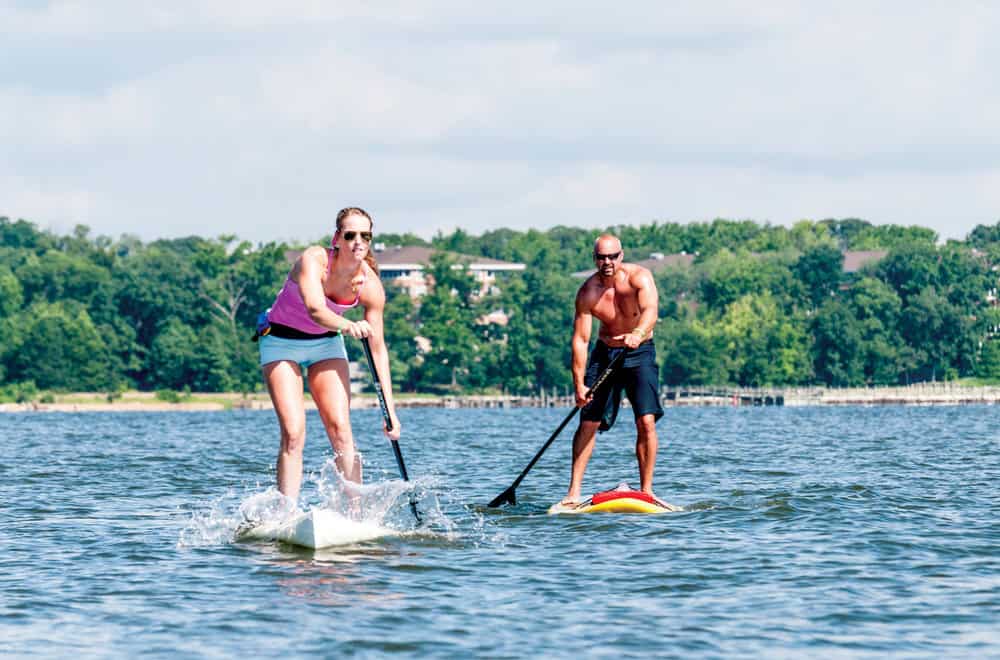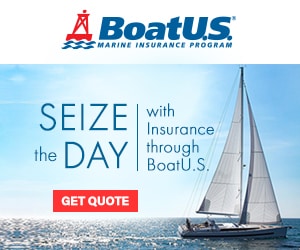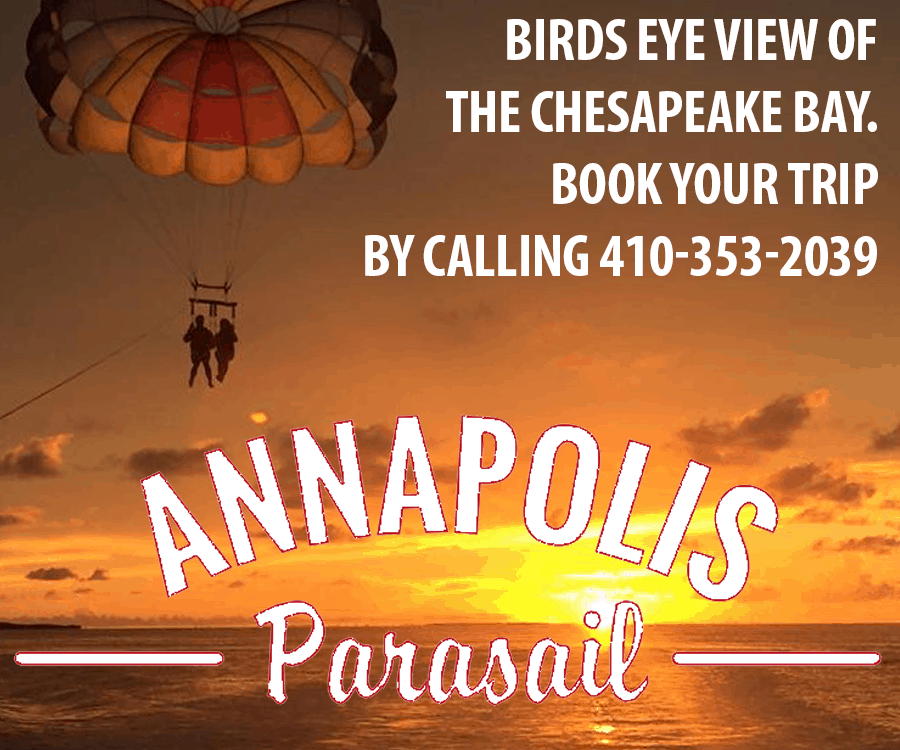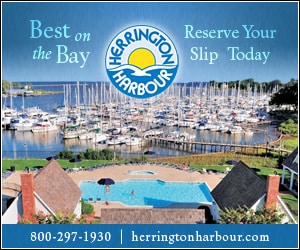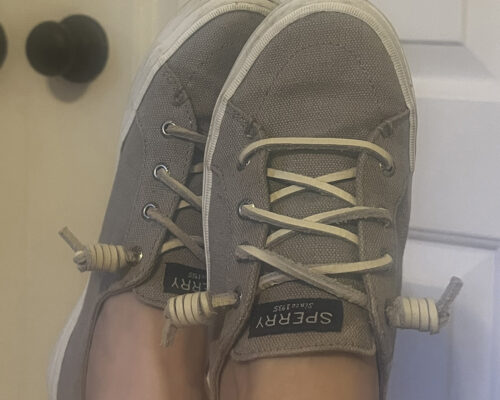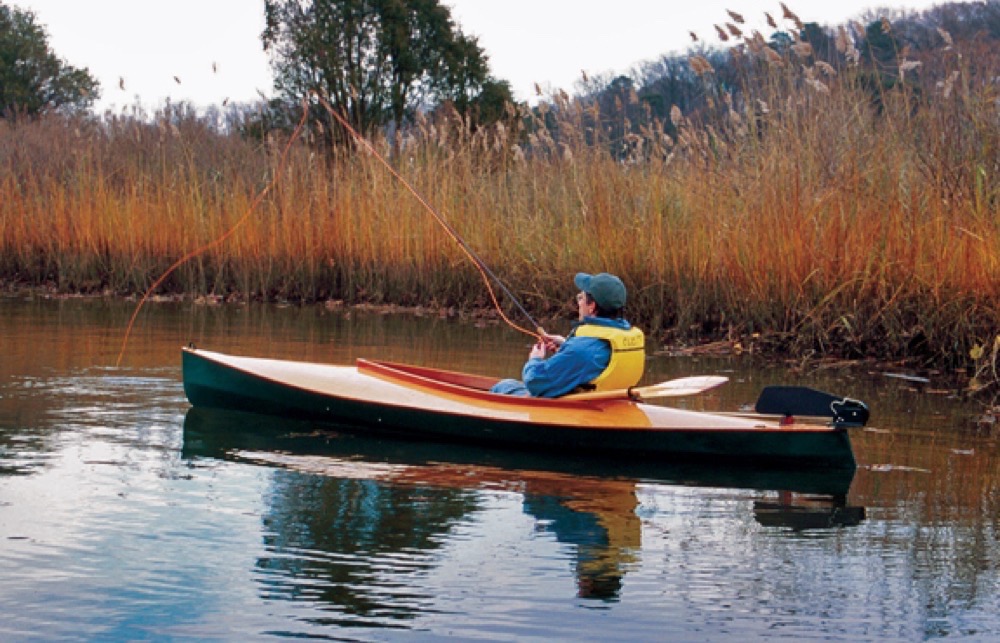by Ann Eichenmuller
ANDY HERBICKGetting out on the water isn’t always easy. Whether you’re waiting for wind, charging the battery, or filling up the tank, sometimes the planning and preparation involved is enough to keep you on the beach or at the dock. That is, unless you have a SUP. Light enough to be carried in one hand or even rolled into a backpack, today’s standup paddleboards are portable, affordable and versatile. And you can forget the gym—not only does your SUP provide a killer core workout, you can even use it as a floating yoga mat. “It’s a great way to sculpt your abs, shoulders, back and hips,” notes Rebecca Wojtach, a certified paddleboard yoga instructor at the Tides Inn in Irvington, Va. “Plus, you get a tan!” It is no wonder that standup paddleboarding has become the fastest growing watersport in the United States, with more than 2.8 million participants and growing. Ready to join their ranks? Then let’s get started.

Know Your Paddler Profile
Are you the adventurer who lives for high surf warnings or the meditative type who yearns for the absolute quiet of a deserted cove? There are four basic types of boards, and knowing what you want from yours is the first step in choosing your SUP.

Still not sure? For both flat and choppy Chesapeake Bay water conditions, Kevin Haigis of Annapolis-based Capital SUP recommends a touring board for its more efficient glide based on its displacement-type nose.
“A touring board is like your road bike,” he explains, versus the all-around or surf-style boards, “which would be similar to your beach cruiser bike.”
Weigh Your Alternatives
Even after you have narrowed down what type of board fits your paddler profile, you’ll still have a dizzying number of boards to choose from. Most will be hard boards, primarily constructed of plastic, fiberglass or carbon fiber. There are also a growing number of inflatables on the market. These SUPs are constructed of multilayered cloth, drop-stitched with an outer shell of military grade PVC. They offer some advantages over most hard boards. Inflatables are:
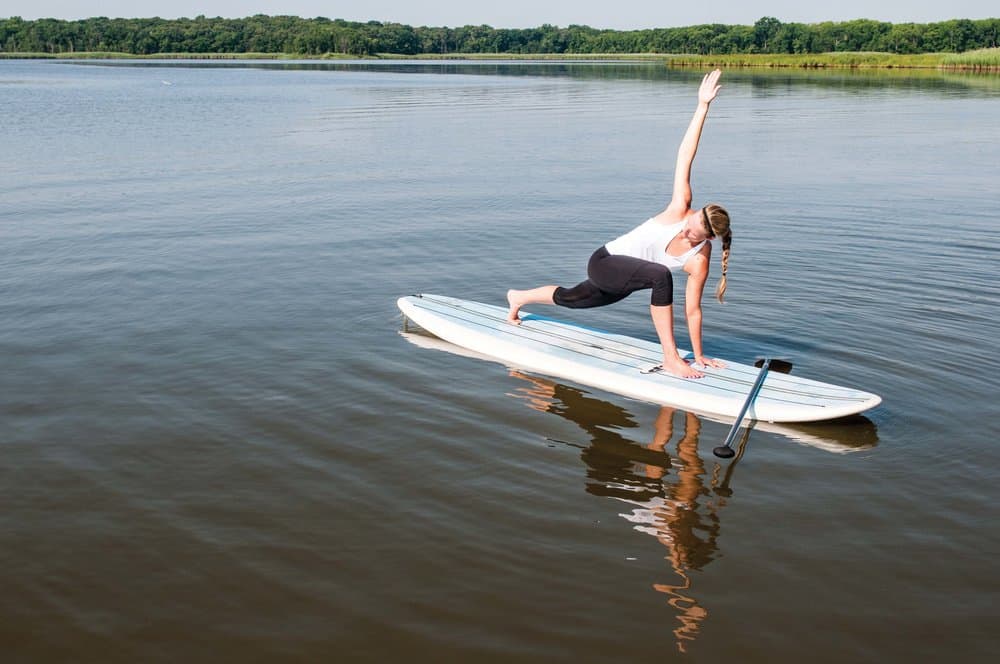
- Lighter
- Have comparable rigidity
- Less expensive
- Able to withstand collisions with
rocks & hard surfaces - Easy to transport
- Require little storage space
- Convenient for travel(i.e. on your boat, RV,
or by air)
They are also five to six percent slower than fiberglass boards and can take as long as 15 minutes to manually inflate, both detractions if time is in short supply.
If inflatables are notable for their convenience, hard boards are known for their variety. The type of construction materials used has a direct correlation to a hard board’s cost and performance.
The least expensive material is plastic. In addition to price, the other advantage of a plastic SUP is durability. Touted as bomb proof, you can even attach accessories like fishing rod holders or seats to the deck without compromising its structural integrity. But these SUPs are heavy and can be unresponsive and hard to paddle. Fiberglass boards, on the other hand, have a foam core and are light, fast and maneuverable. The downside is that they cost more than plastic boards and are easily dinged. Even strapping one tightly to a roof rack can cause minor damage to the rails and deck. The most expensive construction material is carbon fiber. These boards are among the lightest and most rigid. They are designed primarily as high performance racing or surfing SUPs.
Construction materials are not your only consideration. When narrowing down your choices, pay attention to weight limits. Most manufacturers will post these with their products, but the numbers can be misleading. Is the maximum weight rating for surfing or for paddling? Surfing requires less volume, so a board that can handle a 220-pound rider in waves may barely float 150 pounds in flat water. Compare volume or displacement by asking for the specs or checking the manufacturer’s website. If you are a beginner, prefer to stay dry, or plan to bring Fido along, bigger is better. Finally, before you make a purchase, arrange to demo several boards. Even among SUPs of the same length and volume, differences in fin configuration and board shape can make a board seem quirky or tipsy.
Accessorize
Many economical boards come with an adjustable paddle. These are usually plastic and will be a bit heavier than an aluminum, carbon fiber or fiberglass paddle. They are a good choice if you will keep your SUP at a dock or vacation house to be shared with family members and guests. If you plan on racing, surfing or long distance paddling, a lightweight paddle with a comfortable grip is key to your enjoyment. As a rule, your paddle should be 10 to 12 inches taller than you are for racing, eight to 10 inches taller for cruising, and six to eight inches taller for surfing.
Safety First
Don’t rush to the beach just yet. The U.S. Coast Guard considers a SUP a vessel unless it is being operated in surf or a designated swimming area, so you are required to have a life jacket and signaling device such as a whistle on board. Look for a PFD designed for paddlers, since it will provide the greatest flexibility of movement.
According to Haigis, the most comfortable option is the self-inflating SUP belt-style life jacket, which he cautions should always be worn in the front. But this slimmed-down option is not for everyone. “For beginner to adequate swimmers, we recommend a Type III PFD,” he says.
Haigis adds that in addition to the PFD, “Our rule at Capital SUP is that any customer or paddler dropping in from the public must be equipped with a leash attaching themselves to the board. The most serious incidents occur when someone has fallen off and gets separated from their board.”
Get with An Expert

No matter how easy it looks, the initial launch of your SUP can be little dicey. “If it’s your first time, we always recommend a lesson before entering the water on your own,” says Haigis. Capital SUP offers lessons at all three of their locations—Annapolis, Baltimore and Salisbury.
A beginner’s guided tour is another good way to get comfortable with your board. Rebecca Wojtach, who leads SUP tours of Carter Creek, in Irvington, Va., notes that a little professional direction can make anyone’s paddleboarding experience more comfortable. She finds that new paddlers often tense up and take shorter strokes, which makes them less stable. Just reminding them to relax and take longer strokes can make all the difference.
Her other advice? “Take the time to look around you,” she says, gesturing to the mouth of the creek and the Rappahannock beyond. “Then you can’t help but feel gratitude for this beautiful area where we live.”
Patuxent Adventure Center
Solomons, Md.
www.pacpaddle.com
Penguin Paddling
Occoquan, Va.
www.penguinpaddling.com
Chesapeake Bay
Paddling Company
Mathews, Va.
www.chesbaypaddling.com
SouthEast Expeditions
Cape Charles, Va.
www.southeastexpeditions.com
Appomattox River Company
Hampton, Va.
www.paddleva.com
SUP Shops (north to south)
BeachBee Yoga and SUP
Havre De Grace, Md.
beachbeeyoga.com
Chester River Kayak Adventures
Rock Hall, Md.
www.crkayakadventures.com
B’More SUP
Dundalk, Md.
www.baltimoresup.com
Annapolis Canoe and Kayak
Annapolis
www.annapoliscanoeandkayak.com
Capital SUP
Annapolis, Salisbury, Washington, D.C.
capitalsup.com
East of Maui
Annapolis
www.eastofmauiboardshop.com
Shore Pedal and Paddle
St Michaels, Md.
www.shorepedalandpaddle.com

Ann Eichenmuller is a freelance writer who lives with her husband, Eric, on Virginia’s Northern Neck and sails their 33-foot Morgan, Avalon, off the Rappahannock River.

